
Business Plan Reporting: Expanded Chemical Hazard Categories in 2018
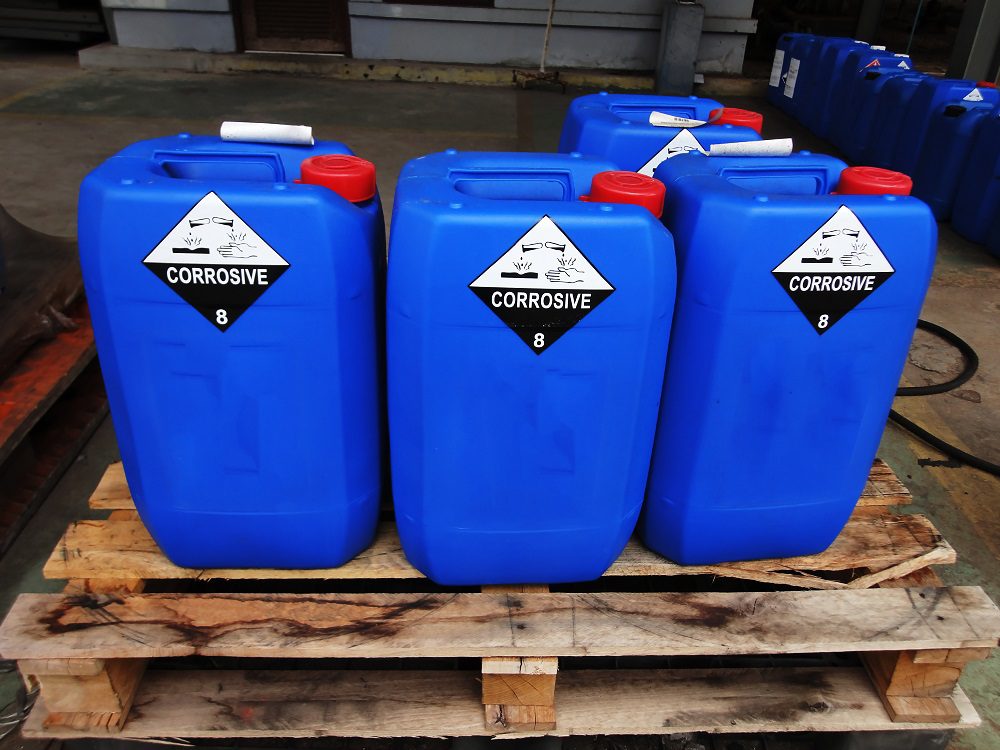
Written by: Joe Mangiardi, NES, Inc.
 Effective for 2018, chemical hazard categories for Hazardous Materials Business Plan reporting have been expanded.
Effective for 2018, chemical hazard categories for Hazardous Materials Business Plan reporting have been expanded.
Hazardous Materials Business Plan Reporting: From Five to Twenty-Four
If your California business handles hazardous materials, you might be aware of the existing annual Hazardous Materials Business Plan reporting requirements. However, finalized on December 28, 2017 and applying as of this reporting year (2018), the chemical hazard categories in Hazardous Materials Business Plan (HMBP or Business Plan) reporting have been expanded by the California Environmental Protection Agency (CalEPA) to align with those recently adopted by the United States Environmental Protection Agency (U.S. EPA).
As a result, CalEPA has increased the number of chemical hazard categories in the California Environmental Reporting System (CERS) from five to twenty-four. These are the categories listed for Business Plan reporting when completing chemical inventories. As had been the case, categories are divided into two classes, physical hazards and health hazards, but now each of these classes has been expanded. A facility’s local unified program agency (UPA) will remain as the regulatory agency responsible for ensuring Business Plan reporting is completed in a correct and timely manner.
Business Plan Reporting with CERS
This year when regulated businesses log in to CERS to report the chemicals they keep at their facilities, the options and interface will largely be the same. Chemicals in a business’ inventory will be added by performing a search in the CERS system database. This is done by entering the chemical name or other identifying details, such as Chemical Abstracts Service (CAS) Number, as shown below.
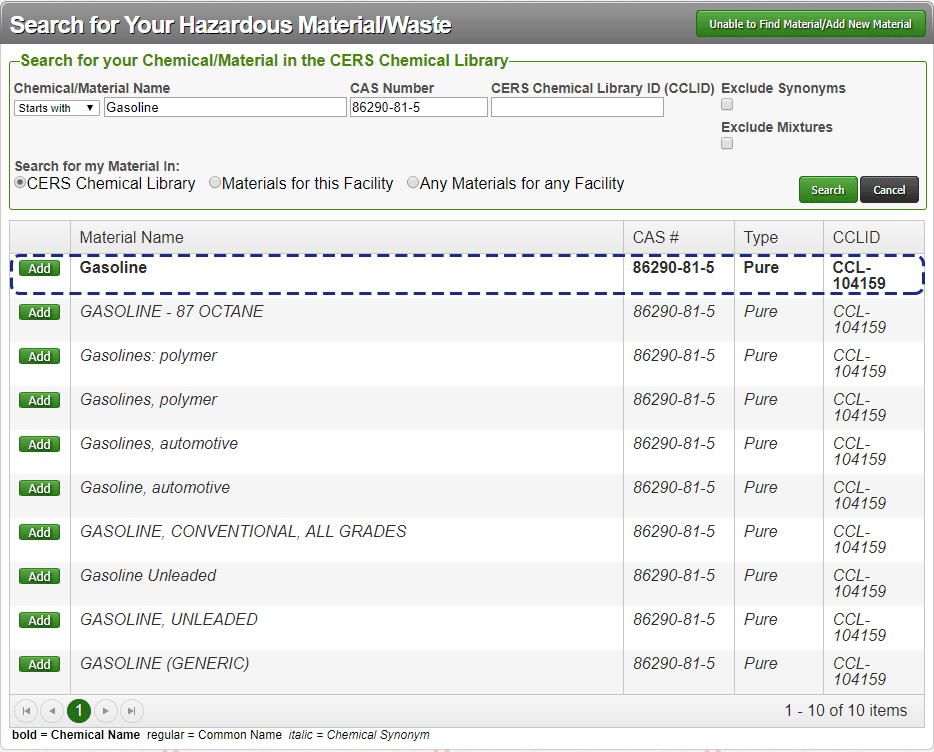 Gasoline, a hazardous material commonly stored at regulated businesses, was selected for this CERS example.
Gasoline, a hazardous material commonly stored at regulated businesses, was selected for this CERS example.
Once added, users will then fill in relevant information pertaining to the chemical’s additional specifications, associated hazards, and hazardous components (if applicable). Storage quantity and location(s) of the chemical at the user’s facility will also have to be entered. The 24 physical and health hazards will be displayed in the ‘Chemical Hazard Classification’ section, as shown in the below picture.
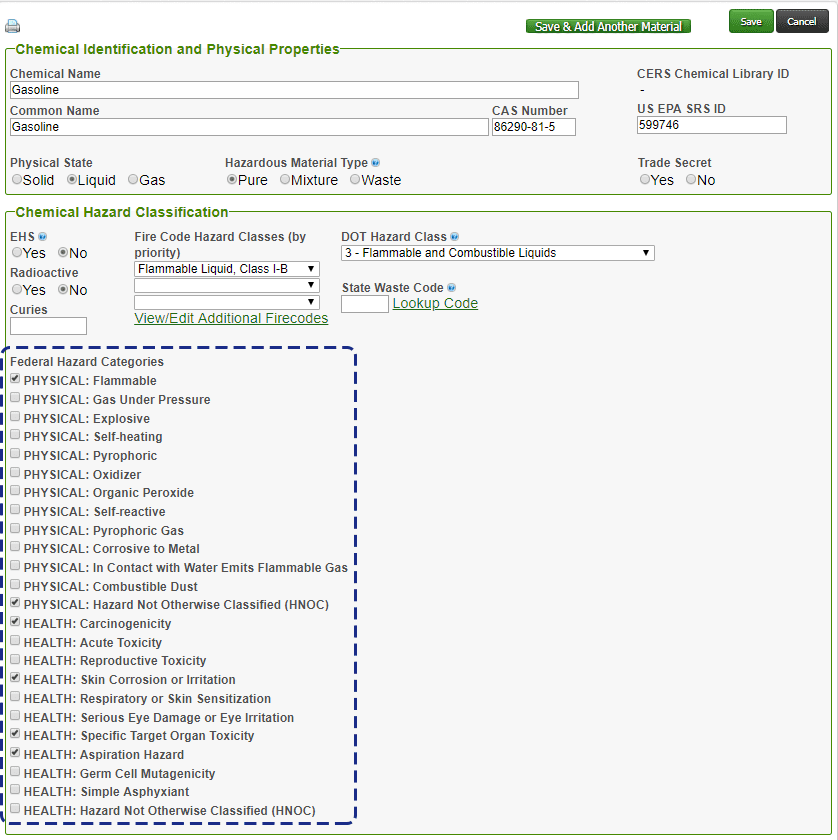 Chemical hazard classification in CERS now involves far more categories than in previous years.
Chemical hazard classification in CERS now involves far more categories than in previous years.
For previously registered chemicals, this view will display the original five categories in addition to the expanded list of 24; businesses will have to update the applicable designations for those qualifying hazardous materials. As phrased by CalEPA in a recent announcement information sheet, “Though the existing 5 federal hazard categories will remain in CERS for historical purposes, they will be considered obsolete.” The announcement confirms that regulated businesses will be subject to the new categories beginning January 1, 2018 and provides suggested options for preparing the hazardous materials inventory submittal.
Most of the information for selecting the appropriate hazard categories for a material can be found on the material’s Safety Data Sheet, or SDS (previously known as a Material Safety Data Sheet, or MSDS). This is located in Section 2: Hazard Identification, as pictured here.
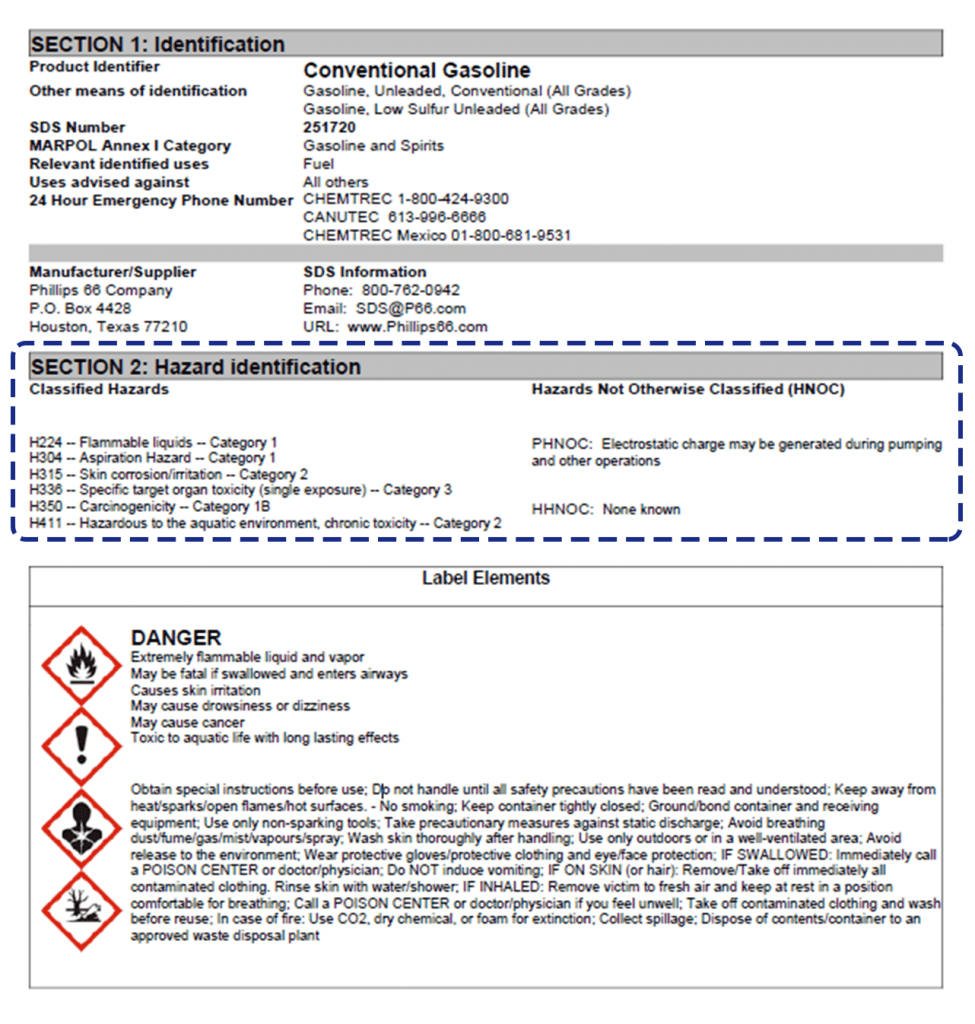 An SDS serves as a helpful reference when filling out hazardous chemical inventories.
An SDS serves as a helpful reference when filling out hazardous chemical inventories.
Note: Certain non-mandatory elements may be listed on the SDS as well, such as ‘Hazardous to the aquatic environment, chronic toxicity’—this hazard is not included for Business Plan reporting.
Business Plan Reporting: What is Included and Who is Required to Submit?
Facilities responsible for managing hazardous materials in amounts greater than or equal to 55 gallons for liquids, 500 pounds for solids, or 200 cubic feet for compressed gases are required to prepare and submit a Business Plan. Further qualifying criteria apply; for more information on Business Plans and hazardous materials, see the Cal OES publication Hazardous Material Business Plan FAQ.
Business Plans are intended to serve as a guide for a facility’s employees and for first responders in the case of a hazardous materials release. The above referenced Cal OES publication offers the following summary of this intent:
- “Provide basic information necessary for use by first responders in order to prevent or mitigate damage to the public health and safety and to the environment from a release or threatened release of a hazardous material
- Satisfy federal and state Community Right-To-Know laws”
As such, Business Plan reporting requirements include:
- Inventory of hazardous materials (for those hazardous materials that meet or exceed the reporting thresholds)
- Emergency response plans and procedures (contingency plan) covering actions to be taken if there is a reportable release or threatened release of a hazardous material
- Initial (new employees) and annual/refresher training for affected employees on the elements of the facility’s contingency plan
- North-oriented site map that includes loading areas, internal and adjacent streets, storm and sewer drains, ingress and egress points, emergency shutoffs, evacuation staging areas, hazardous material handling and storage areas, and emergency response equipment
- Business activities and owner/operator information
A facility’s chemical inventory must be recertified by March 1st of each year.
NES Hazardous Materials Business Plan Requirements Webinar
If you are having difficulty understanding the Business Plan reporting requirements for your facility, NES can help! We are conducting a free webinar on Wednesday, June 13, 2018 that identifies thresholds for hazardous materials that would require a business to develop a Business Plan. This presentation addresses significant Business Plan elements, reporting, and recertification requirements for affected businesses.
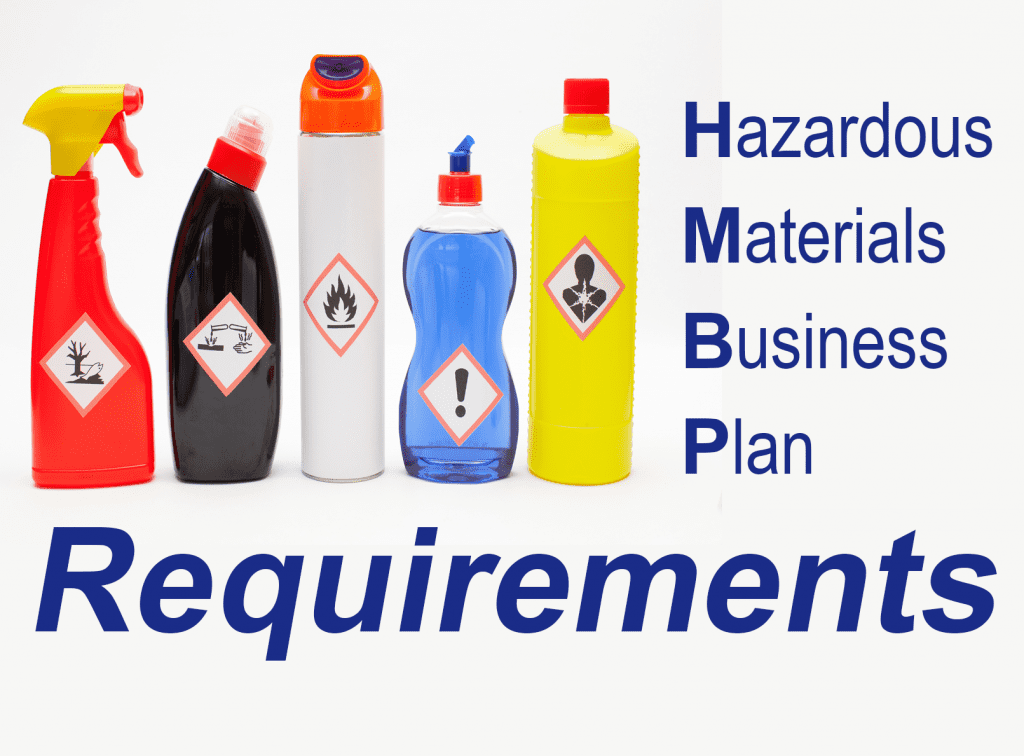 Employers and employees from businesses that store hazardous materials at or above 55 gallons for liquids, 500 pounds for solids, or 200 cubic feet for compressed gases are encouraged to attend this webinar.
Employers and employees from businesses that store hazardous materials at or above 55 gallons for liquids, 500 pounds for solids, or 200 cubic feet for compressed gases are encouraged to attend this webinar.
NES Environmental Consulting
NES has been providing environmental consulting services on behalf of a wide array of public and private businesses and government agencies for the past 30 years. If you require assistance with your facility’s Hazardous Materials Business Plan preparation and submittal, please contact NES at office@nesglobal.net or 916-353-2360 / 1-800-NES-ADVISE.
References:
CalEPA Background Information: New Federal Hazard Categories
Phillips 66 Safety Data Sheet: Conventional Gasoline
CalEPA Announcement: 2018 Hazardous Materials Inventory Reporting
